January 18, 2021 Carlos Trejo Porch.com
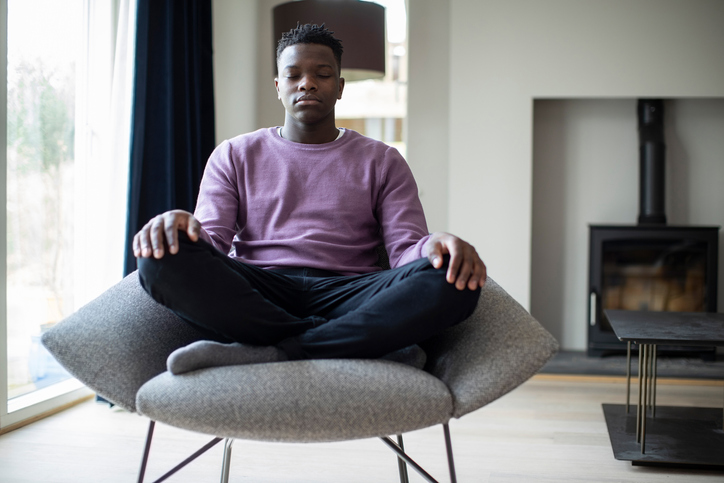
If someone in your home has attention deficit hyperactivity disorder or ADHD, they may have trouble staying focused on tasks, feel fidgety or restless, or have an abundance of energy. While you can’t control the environment outside your home, a few simple changes in each room can create an environment that promotes focus, productivity, and feelings of calm. Especially for households where members are working and attending school online, making your home as comfortable as possible for someone with ADHD will help everyone succeed.
DISCLAIMER: These tips are based on the personal experience of the writer and are not meant to diagnose you or replace the advice of your healthcare professional. For questions or concerns regarding the diagnosis or treatment of ADHD, please talk to your licensed healthcare provider.
What is ADHD?
A neurobehavioral disorder, ADHD causes inattention, distractibility, hyperactivity, and impulsive behaviors. It’s considered the most common childhood mental health disorder, affecting between five and 11 percent of children, and around two to five percent of adults also have ADHD. Symptoms of ADHD can interfere with your quality of life, including causing problems at work, home, and school.
Causes and Types of ADHD
The causes of ADHD are largely unknown, although genetics and the environment are likely to play a role. A DNA test might not give you all the answers, it is recommended that you look for a professional evaluation. The three major types of ADHD are identified by their prominent symptoms.
Impulsive/hyperactive ADHD. This is the least common type of ADHD. It’s characterized by impulsive and hyperactive behaviors, without attention difficulty.
Inattentive/distractible ADHD. This type of ADHD is characterized by attention difficulties and distractibility, without hyperactivity.
Combined ADHD. This is the most common type and is characterized by impulsivity, hyperactivity, distractibility, and attention difficulty.
Treating ADHD
A combination of behavioral therapy and medication is the best way to treat ADHD. Therapy helps children and adults with ADHD train their attention, manage impulsiveness, and create structures that help them focus and stay productive.
Stimulant medications are effective for treating ADHD, and they’re safe when taken as directed. Stimulants like Adderall and Ritalin reduce hyperactive and impulsive behaviors while boosting brain levels of the neurotransmitter dopamine, which is associated with attention and memory.
In addition to behavioral therapy and medication, keeping your home organized and making it easier to maintain regular routines can help you or someone else with ADHD manage symptoms and maintain productivity and focus.
How to make your home more comfortable for people with ADHD
Each room in your home has a different purpose, and you can improve the functionality of each of them with these helpful tips.
In the bedroom
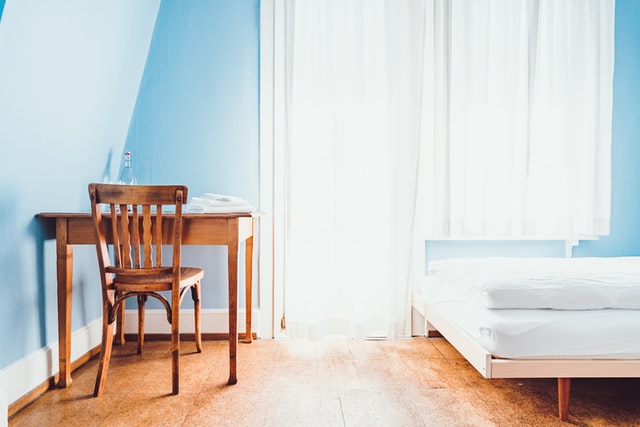
Good sleep hygiene and a bedtime routine are beneficial to everyone. For someone with ADHD, sleep is especially important. Creating a calming space and creating a predictable, organized routine can make going to sleep and waking up less stressful and set the right tone for the day.
Use soothing colors and designs. The color of a room sets a mood and even evokes an emotional response. People with ADHD are often over-stimulated by colors, patterns, and even temperature. Choose neutral, soft, and calming hues of blue, green, and brown to encourage more restful sleep.
Keep it simple. Eliminate clutter in your bedroom to help reduce that cluttered feeling in your brain before bed and when you wake up. Only keep the essentials, and keep them where they belong.
Make your room a no-electronics zone. Electronic devices are notorious for preventing a good night’s sleep. The light from devices interferes with your natural sleep rhythms, and it’s easy to get sucked into social media or a game, which stimulates your brain when you need it to be quiet. Fixation with screens is a common behavior in people with ADHD, so putting some boundaries around when and where you use electronics can help you stay focused on other important tasks throughout the day.
Establish a bedtime and wake-up routine. Routines are important for people with ADHD since these frameworks and habits help them stay on task and switch tasks more easily. Work out a routine that works for you. Your bedtime routine should include changing into pajamas, putting your clothes away and tidying up, and making sure the door is locked and the thermostat turned down. Include a period of winding down before bed, such as with a bath or a book. Your wake up routine should include opening the shades, making the bed, and putting your pajamas away.
In the bathroom
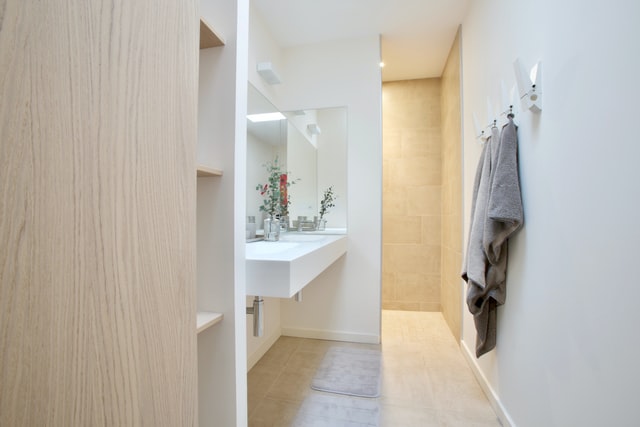
Getting through daily hygiene routines without a hitch requires organization in the bathroom. Keep your daily items in baskets or bins where you can easily find them, and put items away when you’re done with them. If you tend to procrastinate about getting out of the shower or bath, set a timer. If you’re lingering in the tub on purpose to help you relax, add some soothing essential oils, like lavender or tea tree.
In the kitchen
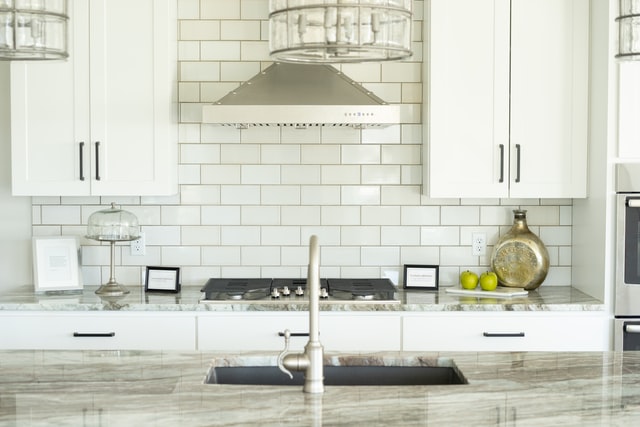
What you eat—and when you eat it—impacts the severity of irritability and lack of concentration. A European study found that 70 percent of children with ADHD showed reduced symptoms as the result of an elimination diet high in protein and fat and low in carbohydrates and common irritating food like dairy and eggs. Consuming a healthy diet at home can be tough for people with ADHD, who may find it hard to stay motivated and focused in the kitchen. These kitchen tips will help you stay calm and focused while you’re cooking.
Get organized. Keep your pots and pans, utensils, and dishes organized so you’re not rummaging through drawers and cupboards looking for the thing you need. A weekly menu and grocery list helps you stay organized so that you know what you’re going to cook each day and you have what you need on hand to make it.
Create stations. To avoid kitchen chaos and make cooking a relaxing endeavor instead of a stressful one, divide your kitchen into areas like food prep, serving, and a place for dirty dishes. If your kitchen doubles as the home admin area—where you pay bills, leave notes and keep the calendar—organize that space, and don’t let it encroach into the other areas. Optimize each area for its purpose: Assemble spices and knives near the food prep area, and keep the serving space clear of clutter and the plates and bowls nearby.
Clear the countertops. If your countertops are packed with appliances, cookbooks, fruit bowls, and other stuff, it’s hard to keep them clean, and it’s easy to lose your motivation and efficiency in the clutter if you have ADHD. Evaluate everything on your countertops, and stow away items that you don’t use frequently. See if there’s a way to rearrange your kitchen to optimize counter space, such as by moving the coffee pot to another spot, making room in the cupboards for cookbooks, and having a basket handy to catch the flotsam and jetsam that tends to clutter up the counters.
Organize the cupboards. If you have ADHD, you’ve probably got five cans of chicken broth in the back of your cupboard that you didn’t know you had. Commit to spending 15 minutes a week arranging the cupboards. Get rid of expired or stale food, take stock of what you have, and make sure everything is easy to find.
Exercise room

Restlessness and fidgety behavior associated with ADHD can be reduced by taking exercise breaks. Walking and running, and activities like yoga or meditation that incorporate deep breathing and mindfulness can be beneficial and induce relaxation and calm. Create a space in your home that’s dedicated to working out. Paint it a soothing color, outfit it with equipment like weights or bands, a treadmill, a yoga mat, a jump rope, or whatever you enjoy. A large mirror can help you focus on your movements and make the space look bigger.
The office

A few simple adjustments to your home office can make a big difference in your ability to focus and stay motivated during the workday.
Keep things in their place. Pick up the clutter, and find a place for everything you need on a daily basis. Store these things out in the open as much as possible so they’re right at hand and you don’t need to go on a hunt for them. Make a tidy-up routine the last thing you do at the end of your workday.
Install a whiteboard, bulletin board, or wall calendar. Keep all of your work and personal tasks in sight at all times with a board you can hang on the wall and see at a glance. If it helps, color code items on the schedule, calendar, or list so you can differentiate quickly between home and work.
Minimize distractions. Turn off unnecessary notifications, and use noise-canceling headphones or a white noise machine to help eliminate distractions. Ask family members to minimize interrupting you while you’re working, since it can be very difficult for people with ADHD to switch gears quickly and easily. Check your email daily, and delete items you don’t need clogging up your inbox and adding to your stress.
A stress-free environment for ADHD is self-care
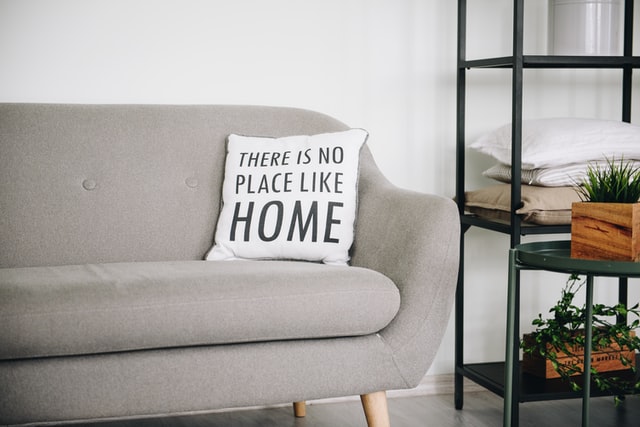
Self-care is a very important aspect of daily life for someone with ADHD. Knowing when to take breaks, redirect attention, or remove unexpected distractions can make the whole household calmer. Making your home a haven for your or someone else with ADHD is an act of self-care with far-reaching effects.
With permission
© 2021 Porch.com, Inc.

